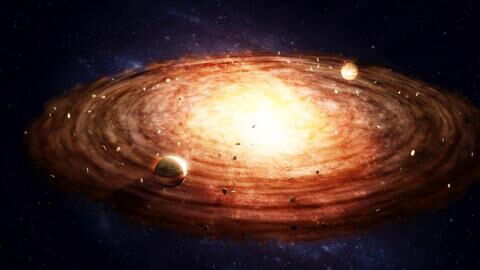The universe is full of strange objects, and our solar system is home to a bizarre collection that continues to perplex scientists. Here are six unconventional space objects you may not have known about, ranging from the Bermuda Triangle of space to a supposed alien probe.
Discover our latest podcast

Space Bermuda Triangle
The South Atlantic Anomaly (SAA) is a spot in Earth's magnetic field where several astronauts have experienced odd occurrences. When the International Space Station passes through the area, some astronauts have seen a bright light flash. The lights are suspected to be caused by radiation belts in the vicinity, which could cause a reaction in astronauts' retinas. The Hubble Space Telescope is unable to acquire data in this region due to the radiation. Because of the mystery surrounding it, the SAA has been dubbed the 'Bermuda Triangle of Space.'
Oumuamua
The discovery of Oumuamua, the solar system's first interstellar object, has left us with more questions than answers. It was initially dubbed as an alien probe by some. It moves too quickly to be an asteroid, and unlike conventional comets, it leaves no debris trail. According to theories, it may be anything from a chunk of an exoplanet to an alien spaceship. Although the object remains in our solar system, it is currently beyond the reach of all of our telescopes.
Planet Nine
Planet Nine is a hypothetical ninth planet that could be hiding in our solar system's outermost reaches. According to astronomers, planet Nine might explain the unstable orbits of faraway objects. It is estimated to be 10 times the mass of Earth and orbits the Sun 20 times further than Neptune. One entire circle around the Sun could take anything from 10,000 to 20,000 Earth years. Its presumed location is so far away that confirming the existence of a ninth planet with today's technology is almost impossible.
Red Rectangle Nebula
A nebula is a cloud of gas and dust that appears to float through space. Many of these exist in our solar system and some are more unusual than others. About 2,300 light-years from Earth is the Red Rectangle Nebula. Scientists aren't sure why it's this shape, but it may be due to shockwaves from the two stars in the middle creating dust rings. There hasn't been a consensus on what causes the reddish colour.
Elst–Pizarro

This moving space object is referred to as a comet, but it also has asteroidal properties, causing astronomers to disagree. It orbits within the asteroid belt, yet it possesses a comet-like dust tail. Because it is the only celestial object known to exhibit both of these qualities, astronomers hope to settle the debate once and for all by sending the Castalia spacecraft in 2028.
Pink Space bubbles
Although these space bubbles aren't strictly part of our solar system, they are claimed to affect it. The Fermi Bubbles are two enormous space figures that appear above and below the galaxy's centre. The bubbles may have been created by the Milky Way's supermassive black hole. The hourglass-shaped bubbles that protrude from the Milky Way are mainly stuff fleeing from a black hole. Nasa discovered them in 2015 and they are supposed to be made of gamma rays, possibly with a distance of 50,000 light-years.















